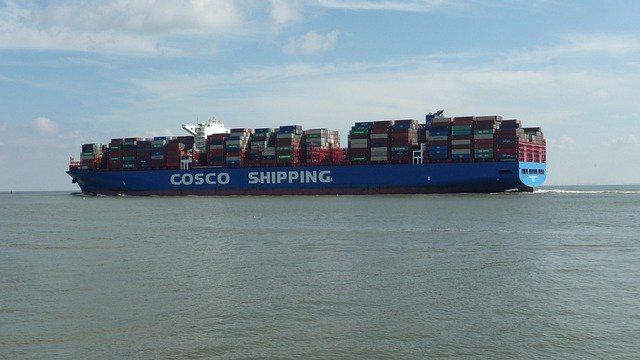How to Fix Common Customs Clearance Delays: A Step-by-Step Guide for E-Commerce Sellers
Customs clearance delays lead to missed launches, chargebacks, and unhappy customers. Most holds are caused by a few repeatable issues: bad paperwork, missing tax IDs, incorrect HS codes, or non-compliant product documents. This guide provides actionable steps for sellers shipping to the US, UK, EU, Australia, and Canada. Use the checklists to standardize your documents, pre-file when possible, and implement a swift escalation process.
1) Fix Commercial Invoice & Packing List Errors
The Problem:
Vague product descriptions, missing HS codes, or inconsistent values trigger inspections, adding days to your clearance time.
The Solution:
Use a mandatory invoice template for all suppliers that includes: full consignee details, importer tax ID (EORI, VAT, EIN, or ABN), accurate 8-digit HS code, unit value & currency, total pieces, net/gross weights, country of origin, and Incoterm.
Always attach a detailed packing list with box/pallet counts and dimensions.
Send these documents to your broker 48–72 hours before arrival for pre-checking and pre-filing.
Client Case:
A UK beauty seller standardized supplier invoices and required HS codes in advance. Their routine shipments moved from multi-day holds to same-day clearance.
2) Synchronize Transport Documents
The Problem:
Mismatched or missing Bills of Lading (B/L) or Airway Bills (AWB) prevent carriers from releasing your cargo, even after customs approval.
The Solution:
Ensure the B/L or AWB number exactly matches the reference on your commercial invoice.
For US ocean imports, file the Importer Security Filing (ISF) on time and confirm vessel details with your carrier.
Keep original documents or carrier release references easily accessible.
Client Case:
A North American importer avoided port detention by implementing a checklist that validated B/L numbers against the manifest 72 hours before arrival.
3) Manage Importer Tax IDs & Schemes
The Problem:
Shipments are held when authorities can’t match your goods to a valid importer tax ID like EORI (EU/UK), IOSS (EU), or VAT/EIN/ABN.
The Solution:
Maintain a registry of importer tax IDs for each market you serve.
Include the correct ID (EORI, IOSS, etc.) on every commercial invoice.
For EU distance sales, use IOSS where eligible and ensure platform mappings are correct.
Decide early between DDP (Delivered Duty Paid) or DAP (Delivered at Place) to avoid last-mile surprises.

Client Case:
An EU apparel brand added EORI/IOSS fields to their supplier template. Low-value B2C shipments stopped queuing at hubs and cleared seamlessly.
4) Handle Product Compliance for Special Items
The Problem:
Products like batteries, cosmetics, or food require certificates and prior notices. Missing documents lead to inspections and long delays.
The Solution:
Batteries: Attach UN numbers, MSDS, and packaging declarations.
Cosmetics: Have ingredient lists and responsible-person details ready.
Food: File prior notices (e.g., US FDA) and ensure producer registrations are complete.
Share all compliance documents with your broker and carrier before booking the shipment.
Client Case:
A gadget seller had repeated holds on power banks. After adding MSDS sheets and UN numbers to every shipment and pre-alerting their carrier, inspections were reduced to fast document checks.
5) Execute a Stuck-Shipment Playbook
The Problem:
Without a clear process, teams waste days on emails while demurrage and stockout costs pile up.
The Solution:
Adopt a 4-step SOP:
1-Hour Doc Audit: Verify the invoice, HS code, B/L/AWB, and any licenses.
Broker Escalation: Call your broker directly and attach all digital files.
Containment Decision: Request an inspection slot, submit a corrected entry, or authorize a partial air shipment for critical items.
Root Cause Fix: Log the failure and update supplier templates to prevent recurrence.
Client Case:
A US electronics distributor used this playbook to resolve a container hold. Broker escalation and a partial air shipment kept their production line running, cutting recovery costs by 45%.
Why Trust Our Expertise?
We manage critical e-commerce customs flows into the US, UK, EU, Australia, and Canada. Our proven document templates, pre-filing systems, and local broker networks reduce clearance times and prevent demurrage costs. Implement these steps to make delays a thing of the past.
Get Your Custom Clearance Plan
Stop losing time and money to customs holds. Click here to schedule a free consultation.
Prefer to email? Send your shipment details (origin, destination, product type, volume, and any tax IDs) to Hxin80377@gmail.com. We’ll return a lane-specific clearance plan, a document checklist, and a DDP/DAP recommendation to get your goods moving.
Related Posts
How to Solve US Customs Clearance Delays & Avoid Penalties
How to Solve US Customs Clearance Delays & Avoid Penalties…
Trade War Compliance: Managing Tariff Risks & Supply Chain Solutions
Trade War Compliance: Managing Tariff Risks & Supply Chain Solutions…
How to Handle Customs Clearance for Dangerous Goods: Compliance Rules to Avoid Seizures
How to Handle Customs Clearance for Dangerous Goods: Compliance Rules…

